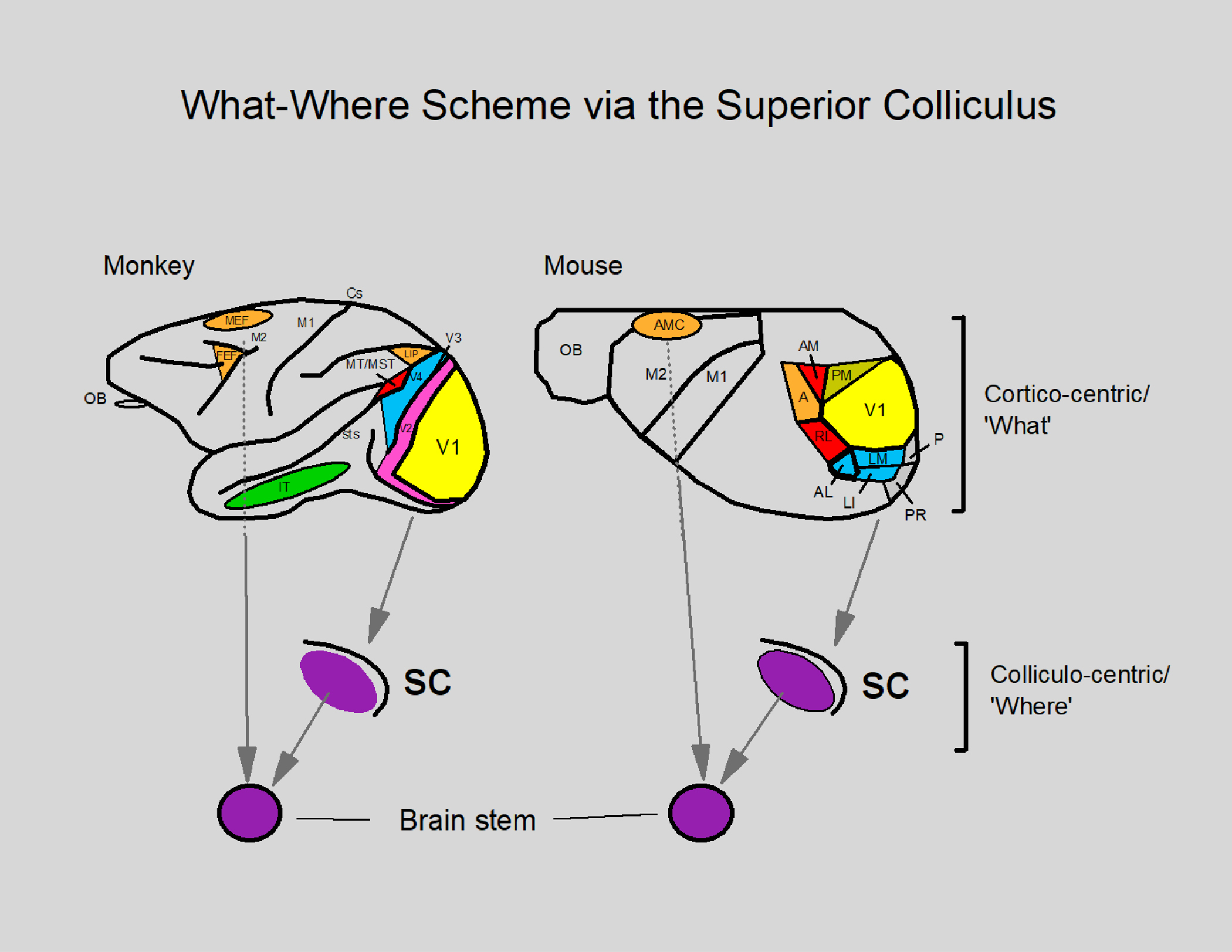Figure 7.

The what-where scheme as originally proposed by Ingle and colleagues in 1967 with respect to the superior colliculus. In this scheme the neocortex is designated as a feature detector (cortico-centric ‘what’) which then sends information to the superior colliculus (SC) for orienting the eyes and head toward peripherally located objects using a retinotopic map in both the mouse and the macaque monkey. In order to move the eyes and head, the brain stem (which is innervated by the superior colliculus and the eye fields in the frontal cortex—FEF and MEF/AMC) contains neurons whose firing rate increases to bring about a precise orientation of the eyes and head to position a visual target in the center of gaze by contracting the muscles (Ingle 1973; Ingle et al. 1967; Schiller and Tehovnik 2015). For other details see the caption of Figure 5.
